TRACCE Online Rock Art Bulletin 44
––––––––––––––––––> by Footsteps of Man
edited by Le Orme dell’Uomo (Valcamonica – I)
Cuevas con arte rupestre Paleolítico en CantabriaCantabria posee más de 70 cuevas con arte rupestre by Daniel GARRIDO PIMENTEL |
The Incomplete Versus The UnfinishedOnly the manufacturer of a rock art image could reliably have informed us whether a rock art image is unfinished or whether it is incomplete. Unfortunately informed knowledge is often completely unavailable. Then only the image and its graphical and cultural context are available to possibly separate the unfinished from the incomplete. Additionally, the incomplete image may even include something invisible. To address these issues I will use the rich rock art repertoire of the Desert Andes, focussing mainly on Toro Muerto and Miculla, two enormous rock art sites in the south of Peru. by Maarten van Hoek |
Calling Cards: a New Plains Rock Art Site TypeCalling Card rock art sites, drawn by war parties in enemy territory to taunt their adversaries by illustrating deeds executed against them, are a newly identified site type on the northern Plains of North America. One such site is Cheval Bonnet, a small petroglyph in Northern Montana. Containing coup counting and horse raiding narratives from the early 1800s, analysis of these images shows that most of the petroglyphs can be identified as Crow drawings, even though they are carved in the heart of Historic Blackfeet tribal territory. Once this site was identified as a calling card petroglyph, I was able to identify three others elsewhere on the northern Plains (PDF available). by James D. KEYSER |
Balma dei Cervi Virtual Museum, inaugurationLa seconda conferenza del ciclo Cultura, storia e arte per l’Ossola dell’Associazione Culturale Mario Ruminelli è programmata per giovedì 16 maggio 2019 alle ore 17 presso la Sala Falcioni ex Cappella Mellerio di Domodossola. Sarà sarà presentato e inaugurato il Museo Virtuale della Balma dei Cervi. The second conference of the Culture, history and art for the Ossola cycle organized by of the Mario Ruminelli Cultural Association is scheduled for Thursday, May 16, 2019 at 5 pm in the Falcioni Hall, formerly the Mellerio Chapel in Domodossola. The Balma dei Cervi Virtual Museum will be presented and inaugurated. by Paolo NEGRI |
Balma dei Cervi, make-up a story about…Le figure della Balma dei Cervi sono in grado di stimolare un’ampia varietà di laboratori didattici: utilizzando diverse tecniche di pittura o di incisione su rame e legno possono essere create vere e proprie gallerie artistiche. Le stesse figure, trasformate nei personaggi di un racconto o di una poesia possono ispirare laboratori di scrittura creativa e di teatro. The Balma dei Cervi figures can inspire a wide variety of educational activities; you can create your own realistic art galleries using a variety of techniques such as painting, copper embossing and wood engraving. These same figures, turned into characters from a story or elements of a poem, may inspire creative-writing workshops and theatre performances. by Andrea ARCÀ, Angelo Eugenio FOSSATI |
Balma dei Cervi, at the roots of our prehistoryIl territorio di Crodo ospita una delle più importanti pareti con pitture rupestri preistoriche di tutto l’arco alpino. Oltre 100 figure dipinte, di cui trenta umane maschili e femminili, schematiche, a braccia in su e in giù, quasi tutte prive di testa, forse anche con scene di parto. Numerosi gli allineamenti di pallini, spesso abbinati ai personaggi umani. One of the most important rock shelters with prehistoric paintings in the whole of the Alpine Arc is found in the territory of Crodo. Over 100 painted images have been recorded, including 30 schematic male and female human figures, some with upraised arms others facing downwards, almost all of which are without a head, including some possible representations of birth scenes. by Andrea ARCÀ, Angelo Eugenio FOSSATI |
Balma dei Cervi, archaeology and researchLe pitture della Balma dei Cervi, soggette ai danni del tempo e ai rischi di degrado antropico, costituiscono un bene culturale raro, prezioso ed estremamente delicato. Le esigenze di protezione e le notevoli difficoltà di accesso ne sconsigliano la musealizzazione in loco. Il programma di documentazione, valorizzazione e comunicazione è coordinato dalla Soprintendenza Archeologia, Belle Arti e Paesaggio.. The rock paintings of the Shelter of the Deer are rare, precious an extremely delicate cultural assets. They are endangered by the deterioration of time and by the risks of damage caused by humans. Safeguard requirements and difficulties in access discourage the creation of a Museum in the field. The documentation, valorisation and communication plan is coordinated by the Superintendence of Archaeology, Fine Arts and Landscape. by Francesco RUBAT BOREL |
Benvenuti a Crodo, welcome to Crodo! Il territorio di Crodo è situato in quella lingua delle Alpi Piemontesi che s’incunea tra la Svizzera tedesca e quella italiana. È ricchissimo di risorse naturali e culturali. La scoperta della Balma dei Cervi è per Crodo un ulteriore elemento di ricchezza: a tutti i visitatori il mio caloroso benvenuto nel nostro territorio e nel nostro Museo Virtuale! by Ermanno SAVOIA, Mayor of Crodo |
The Cupules of the Imaoun Complex, Southern MoroccoIn the area just south of the Anti-Atlas numerous rock art sites have been recorded. However, there are remarkably few rock art panels with cupules in that area. This study describes a surprisingly high number of cupule panels in the Imaoun area, north of the town of Akka in southern Morocco, which represents a true anomaly in this respect. by Maarten van HOEK |
Valcamonica fieldwork 2019, again rock art!Tracing prehistory: from July 18 to August 08 2019 the annual archaeology field school at Paspardo will be open to archaeologists, scholars, students and enthusiasts. We are working on engraved rocks made by prehistoric and protohistoric people during the Neolithic (six thousand years ago), Bronze Age and Iron Age (from four thousand to two thousand years ago).This area gives a great opportunity to learn, survey, photograph, draw and catalogue the rock engravings. The program involves field research, documentation, tracing, guided visits and lectures. Fieldwork is organised by Footsteps of Man, Valcamonica. Infos, poster and photo-galleries here available. by Angelo Eugenio FOSSATI |
TRACCE Online Rock Art Bulletin 44 July 2019 |
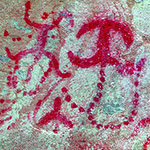

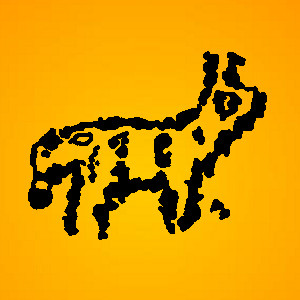
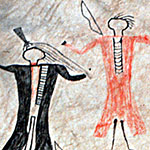

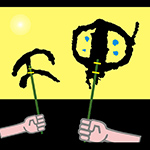
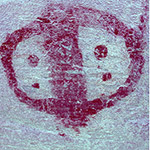
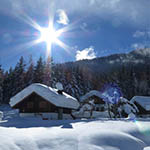
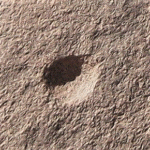

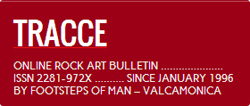














Leave a Reply